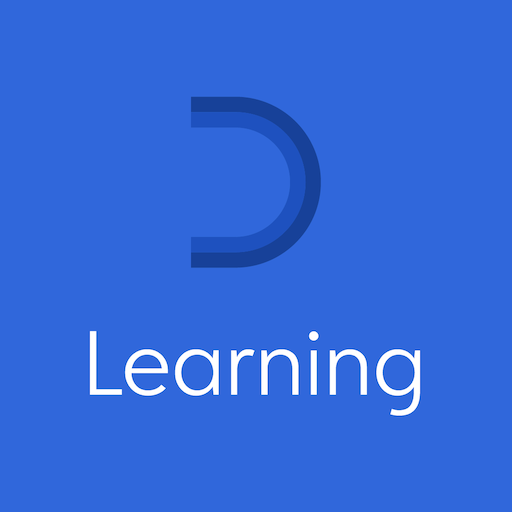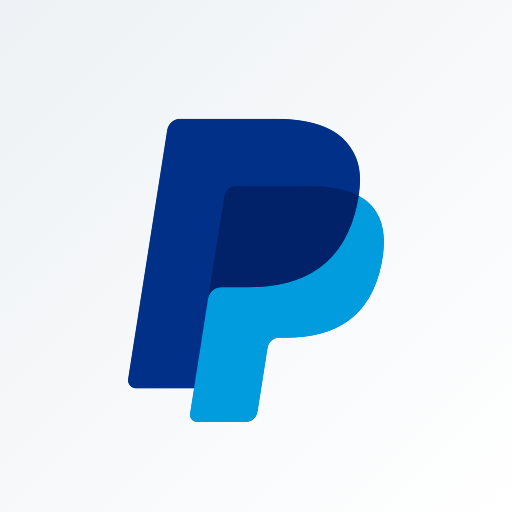Asana
About this app
If you are in search of a comprehensive project management tool that can assist in streamlining work processes, consider using Asana.
This article will cover what Asana is, its key features, functionalities, and the advantages of utilizing this platform for work purposes.
Additionally, it will discuss the various subscription plans offered, effective methods for using Asana, its compatibility with other applications, and the security measures in place to safeguard user data.
Stay tuned for reviews, ratings, and user feedback regarding Asana.
What is Asana?
Asana is a productivity and task management tool designed to assist individuals and teams in organizing, tracking, and managing their work effectively. It functions as a comprehensive platform for project management, task tracking, team collaboration, and seamless communication.
By making use of Asana's features such as task creation, assignment of responsibilities, deadline setting, and visualization of project timelines, users can streamline their workflow and improve overall work efficiency. Its user-friendly interface enables users to prioritize tasks, monitor progress, and ensure timely project completion. Asana's capacity to centralize project-related information, facilitate real-time collaboration among team members, and offer transparency in task allocation positions it as a valuable tool for businesses seeking to enhance project coordination and team productivity.
What are the Features of Asana?
Asana offers a variety of features designed to address different aspects of work management. These include task assignment, project planning, team collaboration, and task prioritization. Asana's interface is user-friendly and its tools are robust, helping to streamline workflow.
Users of Asana can assign tasks to team members, establish due dates, create project timelines, and monitor progress all within one platform, making it a comprehensive productivity software solution. With features for file sharing, task commenting, and integration with other tools, Asana facilitates seamless collaboration among team members, ultimately boosting overall efficiency. The task prioritization feature ensures that important deadlines are met and work is organized efficiently, leading to enhanced team coordination and task organization.
How Does Asana Work?
Asana functions based on the principle of efficient task delegation and tracking, which helps teams improve productivity and monitor work progress effectively. By providing features for tracking task completion and enhancing overall team productivity, Asana brings innovation to work efficiency.
With its user-friendly interface, Asana allows team members to assign tasks, set deadlines, and monitor progress within a centralized platform. This simplifies communication and collaboration, ensuring that everyone remains informed and stays on course.
Asana's customizable options permit teams to adjust the platform to their specific requirements, whether it involves organizing workflows, prioritizing tasks, or monitoring important milestones. By offering a comprehensive view of project statuses and individual tasks, Asana enables teams to make informed decisions and elevate work efficiency.
What are the Benefits of Using Asana?
The use of Asana offers significant benefits such as efficient deadline management, streamlined workflow organization, seamless task scheduling, and timely task reminders. These advantages contribute to improved task management and enhanced productivity.
Through Asana, individuals and teams can easily track deadlines and monitor task progress in real-time. The platform's intuitive interface allows for swift assignment of tasks, ensuring that projects stay on track. Customizable workflows enable users to tailor their processes to suit specific project needs, boosting efficiency. Asana's reminder feature helps prevent any missed deadlines, keeping teams focused and accountable throughout the project lifecycle. Asana serves as a comprehensive tool for optimizing task management, enhancing deadline tracking, and improving workflow efficiency.
What are the Different Plans Available for Asana?
Asana offers a range of plans that cater to different needs, from individual project management to team task tracking and coordination. These plans are designed to meet various requirements, such as setting task deadlines and improving team collaboration.
The plans offered by Asana are suitable for projects of all sizes, whether it's a personal task list or a complex team project. The individual project management plan is ideal for individuals who want to stay organized and focused, providing tools for setting priorities and deadlines.
For teams, the higher-tier plans include collaborative features that enable smooth communication, file sharing, and progress tracking among multiple team members.
How to Use Asana for Work?
Using Asana for work entails efficient task scheduling, timely task reminders, regular project updates, and streamlined work management. By implementing these strategies, users can optimize their productivity and maintain an organized workflow.
With Asana, individuals have the ability to generate detailed task lists with specific due dates and priorities, ensuring that no crucial assignment is overlooked. The reminder feature in Asana enables users to establish notifications for upcoming deadlines, assisting them in staying on track and meeting project milestones. The platform promotes seamless collaboration by delivering project updates in real-time and facilitating communication among team members, fostering a cohesive work environment.
How to Create a Project in Asana?
Initiating a project in Asana involves creating tasks, defining milestones, and setting schedules to track project progress effectively. It enables easy updates on task status and prioritization to enhance project efficiency.
To begin a project in Asana, first, identify the key tasks necessary to achieve the project goals. These tasks can then be subdivided into smaller subtasks and assigned to team members with specific deadlines. Establishing milestones aids in monitoring project progress and adhering to crucial deadlines. Defining timelines for each task ensures team members understand their roles and the project's overall schedule. Regular updates on tasks and progress reports assist in identifying any obstacles and adjusting priorities to maintain smooth project advancement.
How to Assign Tasks in Asana?
Tasks in Asana can be assigned by setting deadlines, promoting team collaboration, and effectively delegating responsibilities. By leveraging these features, users can improve task management, team efficiency, and project outcomes.
Setting clear deadlines in Asana helps team members prioritize tasks and work towards goals effectively. Collaborating within tasks allows for seamless communication, sharing feedback, and tracking progress. Delegating responsibilities among team members ensures an even distribution of workload, maximizing efficiency and fostering team accountability.
This integrated approach creates a productive work environment where each team member understands their role, the completion timeline, and the overall project objectives.
How to Set Deadlines and Reminders in Asana?
Establishing deadlines and setting reminders in Asana is essential for effective task progress tracking, receiving timely notifications, and maintaining regular project updates. By making use of these functions, individuals can keep themselves organized and aligned with their work.
Within Asana, users have the ability to establish task deadlines, aiding them in prioritizing and managing their time efficiently. Reminders can also be configured to prevent any tasks from slipping through the cracks, ensuring that team members are well-informed and responsible. These functionalities not only streamline workflow processes but also improve communication among project team members. By defining clear deadlines and setting reminders, users can prevent delays and proactively oversee project timelines, ultimately leading to successful project completion.
What are the Integrations Available for Asana?
Asana provides a range of integrations with other applications to optimize task management, streamline task status updates, and facilitate project updates. These integrations offer additional functionalities and enhance overall workflow efficiency.
By combining Asana with tools like Slack, Google Drive, and Zoom, users can easily monitor task deadlines, receive real-time updates, and ensure project synchronization. This seamless integration enables automated task creation and assignment, simplifying workflow processes and improving collaboration among team members.
Asana's integration choices allow users to centralize communication, access task-related information from various platforms, and establish a more organized and efficient task management system.
How to Integrate Asana with Other Apps?
The process of integrating Asana with other apps involves configuring settings, authorizing access, and synchronizing data to facilitate team collaboration, improve work efficiency, and streamline task tracking. Connecting Asana with external tools allows users to enhance their workflow and communication.
This integration offers various benefits for teams looking to centralize their project management activities. Any updates made to tasks in Asana can automatically propagate to linked applications, saving time and reducing the chances of errors from manual data input. By integrating Asana with platforms like Google Drive or Slack, teams can enjoy real-time updates and notifications, ensuring everyone remains informed. This synchronization promotes a more cohesive and effective work environment, ultimately increasing productivity and encouraging a culture of transparency and accountability.
What are the Benefits of Integrating Asana with Other Apps?
Integrating Asana with other apps can provide benefits such as streamlined task tracking, improved project planning, and enhanced team coordination. These integrations allow users to consolidate their work management and enhance overall productivity.
Pairing Asana with external applications enables individuals to switch seamlessly between different platforms while keeping track of their tasks and projects. The ability to sync Asana with tools like Google Calendar or Slack ensures that all relevant information is readily accessible and current. Integrating with time-tracking apps improves work efficiency by offering precise data on task durations. This comprehensive approach to project management and task organization enhances collaboration among teams and facilitates a more efficient workflow.
Is Asana Safe to Use?
Asana places a high priority on user data security and implements strong security measures to protect sensitive information. By utilizing strict measures and encryption protocols, Asana ensures that user data is kept secure and confidential.
With a focus on user privacy, Asana uses industry-standard encryption techniques to secure data transmission and storage. Asana regularly performs security audits and updates to proactively identify and address potential vulnerabilities. By following best practices and continually evolving security standards, Asana aims to offer a secure platform for users to collaborate and manage their projects with confidence. This commitment to data protection highlights Asana's dedication to maintaining a secure and reliable environment for its users.
What Security Measures Does Asana Have in Place?
Asana utilizes various security measures to protect user information, such as encryption protocols, access controls, and routine security audits. These measures are in place to secure data, support team collaboration, and facilitate dependable task reminders and project updates.
Encryption is crucial in ensuring that sensitive user data remains secure and unreadable if unauthorized access occurs. Access controls further enhance security by restricting who can access and modify information within Asana.
Regular security audits are carried out to proactively identify and address any vulnerabilities, ensuring the platform's integrity. These robust security features not only safeguard user data but also offer users peace of mind when using Asana for seamless team collaboration and effective project management.
How Does Asana Protect User Data?
Asana prioritizes the protection of user data by utilizing stringent encryption methods, secure data storage, and regular access monitoring. The platform tracks task progress, updates task statuses, and synchronizes project updates securely to maintain the confidentiality and integrity of user information.
The encryption protocols employed by Asana adhere to industry best practices to safeguard data from unauthorized access. Alongside encryption, the platform utilizes secure storage measures like data replication and redundancy to mitigate data loss risks. Continuous access monitoring is in place to promptly identify and address any suspicious activities.
Task progress tracking allows users to effectively monitor project milestones, while status updates facilitate clear communication among team members. Through project synchronization, Asana promotes seamless collaboration while placing a strong emphasis on data security.
What are the Reviews and Ratings for Asana?
Asana has received positive reviews and ratings for its app, with users appreciating its impact on team productivity and effective task management. Reviewers commonly emphasize Asana's ability to improve collaboration and streamline workflow.
Users praise Asana for its user-friendly interface and comprehensive features that allow for seamless communication and task tracking within teams. Many reviewers mention a noticeable decrease in time spent coordinating tasks and an increase in accountability among team members. Asana's real-time updates and notifications facilitate efficient project planning and execution, earning praise for its contribution to enhancing overall productivity. The app's capability to centralize project information and simplify task delegation promotes a more organized and focused work environment, resulting in higher satisfaction levels among users.
What Do Users Say About Asana?
Users have praised Asana for its intuitive task completion tracking, improved team productivity, and increased work efficiency. Their feedback emphasizes the positive influence Asana has on task management and overall productivity levels.
Many users have stated that using Asana has changed the way they organize, prioritize, and complete tasks within their teams. One user commented, "Asana has really changed how we work together and meet deadlines. It's like having a virtual assistant helping us with our projects." Another user pointed out the seamless integration of features that enhance communication and task assignment, simplifying teamwork and making it more efficient.
What are the Pros and Cons of Using Asana?
Asana offers several advantages, including effective task progress tracking, streamlined task deadlines, and improved team coordination. Users may face certain challenges related to feature complexity or learning curve, which can affect their overall experience with the platform.
On a positive note, Asana excels in providing a clear overview of task statuses, assisting teams in staying up to date on project timelines. The platform's capability to establish deadlines and reminders ensures that no crucial tasks are missed, boosting productivity. Asana's collaboration features facilitate smooth communication among team members and encourage transparency in project management.
However, users might find navigating through the various functions and integrations somewhat overwhelming, particularly when initially getting started. This learning curve could potentially slow down initial adoption and necessitate some time investment to fully leverage the platform's capabilities.
Related Apps
-
Legion Workforce EngagementGETBusiness
-
Package TrackerGETBusiness
-
Fight For Your RightsGETBusiness
-
Dayforce LearningGETBusiness
-
PayPal BusinessGETBusiness
-
Save A Lot FLGETBusiness


















